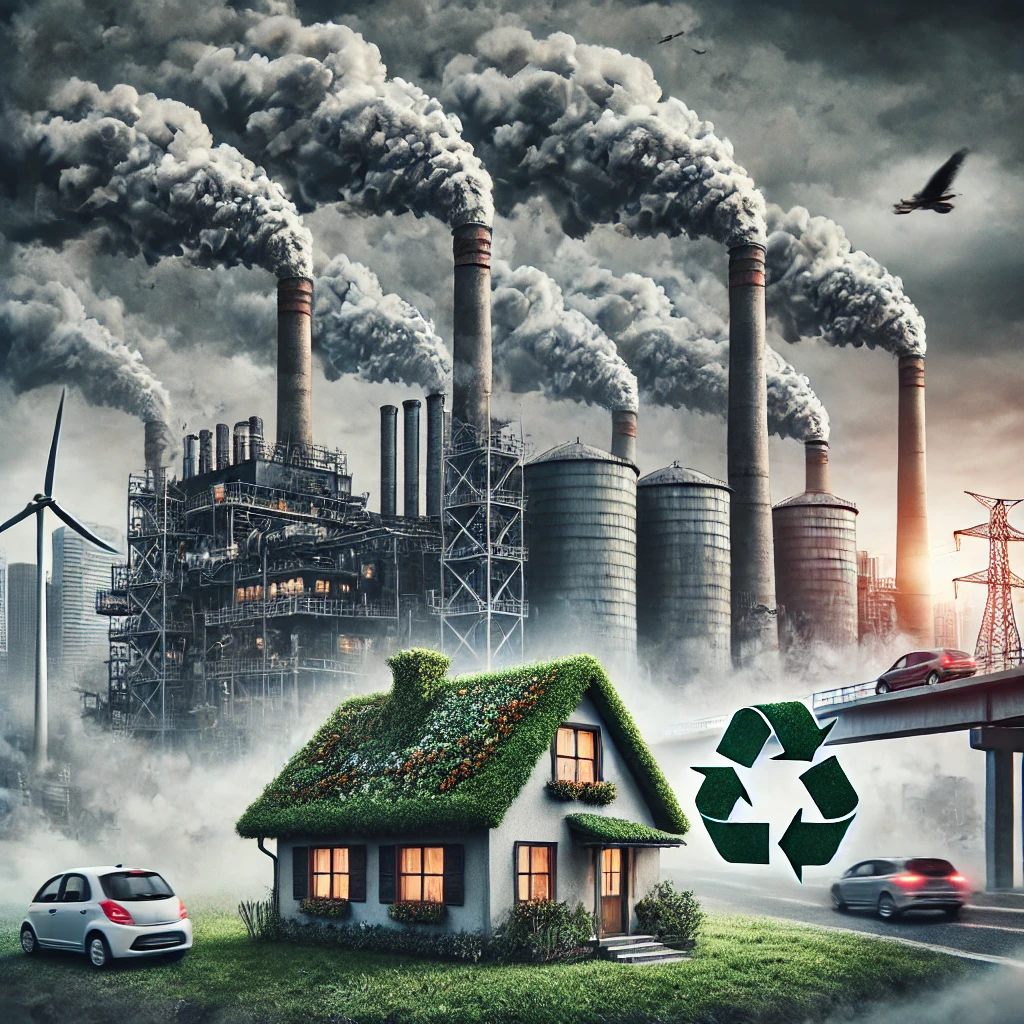
Carbon credit schemes have gained global popularity as a tool to offset carbon emissions and combat climate change. However, behind the scenes, many of these programs come with significant ethical and environmental concerns. In this article, we will delve into the dark side of the carbon credit scheme, exploring how it can negatively impact indigenous communities, biodiversity, and even the climate itself.
What Are Carbon Credits? 📊
Carbon credits represent a permit or certificate that allows a company or individual to emit a certain amount of carbon dioxide (CO2) or other greenhouse gases. The premise is simple: companies can “offset” their emissions by purchasing these credits, which are typically generated through projects that reduce or capture carbon, such as reforestation, renewable energy, or energy efficiency programs.
On the surface, it seems like a win-win solution. Polluters can continue their activities while compensating for their emissions by supporting green initiatives elsewhere. But does this approach really benefit the environment, or does it mask deeper problems?
The Hidden Costs of Carbon Credit Schemes 💡
While carbon credits may appear to be a sustainable solution, the reality is often far more complicated. Here are some of the key issues that arise:
1. Displacement of Indigenous Communities 🏞️
One of the most significant criticisms of carbon credit schemes is their impact on indigenous communities. In many cases, large corporations purchase land in developing countries to establish reforestation projects or other carbon offset initiatives. Unfortunately, this often leads to the forced displacement of local populations, depriving them of their homes and livelihoods.
For example, in Cambodia, the Chong Indigenous villagers in the Cardamom Mountains were evicted from their land as part of a carbon offset project aimed at protecting the forest. Their crops were destroyed, and their traditional way of life was disrupted, all in the name of environmental preservation. This raises a critical question: Can we truly fight climate change at the expense of human rights?
2. Lack of Accountability and Transparency 📉
Another major issue with carbon credit schemes is the lack of transparency in how credits are generated and monitored. Many projects that claim to reduce emissions may not deliver the promised benefits. In some cases, companies may receive credits for activities that would have occurred anyway, meaning there is no additional climate benefit.
This practice, known as non-additionality, undermines the effectiveness of carbon credit schemes. Instead of creating real, measurable reductions in greenhouse gases, these projects may simply allow businesses to continue polluting without making meaningful changes to their operations.
3. Environmental Harm Instead of Preservation 🌳
While many carbon offset projects are designed to protect forests or restore degraded ecosystems, some have had the opposite effect. For instance, reforestation projects that plant non-native or monoculture tree species can actually harm biodiversity and disrupt local ecosystems.
In the Cardamom Mountains of Cambodia, indigenous villagers have reported that the carbon credit scheme has not only displaced them but also led to the destruction of valuable crops and native vegetation. This highlights a troubling contradiction: projects intended to benefit the environment can sometimes cause more harm than good.
4. Carbon Credits as a License to Pollute 🏭
Perhaps the most fundamental issue with carbon credits is that they provide a way for companies to avoid reducing their own emissions. By purchasing credits, businesses can continue their polluting activities while claiming to be “carbon-neutral.” This creates a dangerous loophole, allowing major polluters to maintain business as usual without addressing the root causes of climate change.
As a result, carbon credit schemes often serve as a distraction from the urgent need for systemic change. Instead of investing in cleaner technologies and reducing emissions at the source, companies can buy their way out of responsibility, leaving the real problem unsolved.
Case Study: The REDD+ Project in Cambodia 🌱
One of the most controversial examples of the dark side of carbon credit schemes is the REDD+ project in Cambodia’s Cardamom Mountains. The project, which was launched to prevent deforestation and protect biodiversity, has faced significant backlash from local communities.
The Chong Indigenous villagers in the area report that the project has restricted their ability to farm, collect firewood, and live according to their traditional ways. Human Rights Watch has documented forced evictions, destruction of property, and even arrests of villagers who were simply trying to survive.
While the project has been promoted as a success in the fight against deforestation, it has come at a significant cost to the people who call the Cardamom Mountains home.
Global Controversies Surrounding Carbon Credits 🌍
Cambodia is not the only country where carbon credit schemes have caused problems. Globally, similar issues have arisen, with local communities being displaced or denied access to resources in the name of environmental protection.
In India, for example, the Supreme Court ordered the eviction of millions of forest-dwelling people to make way for conservation projects that generate carbon credits. In other cases, communities have reported that the promised benefits of carbon offset projects, such as schools or medical facilities, never materialized.
These controversies highlight a critical flaw in the current carbon credit market: the lack of oversight and accountability. Without proper regulation, these projects can do more harm than good, both for the environment and for the people affected by them.
Solutions: Moving Beyond Carbon Credits 🌎
If carbon credit schemes are not the answer, what can be done to address the climate crisis? The most effective solution is to focus on real emissions reductions rather than relying on offsets. This means investing in renewable energy, improving energy efficiency, and adopting sustainable practices across industries.
Additionally, carbon credit schemes should be reformed to ensure they meet rigorous environmental and human rights standards. Projects must be transparent, accountable, and deliver real climate benefits without harming local communities or ecosystems.
Conclusion: The True Cost of Carbon Credits 🏞️
The dark side of the carbon credit scheme reveals the complexities of using market-based solutions to address climate change. While the idea of offsetting emissions may seem appealing, the reality is that many projects fail to deliver on their promises, and some even cause harm to the very people and ecosystems they are meant to protect. To understand more about the limitations of carbon offset programs, check out our in-depth article on why carbon offsets might not always be the solution.
As we move forward in the fight against climate change, it’s crucial to recognize that carbon credits are not a silver bullet. Instead, we must focus on real, sustainable solutions that reduce emissions at their source and protect both the environment and vulnerable communities.



